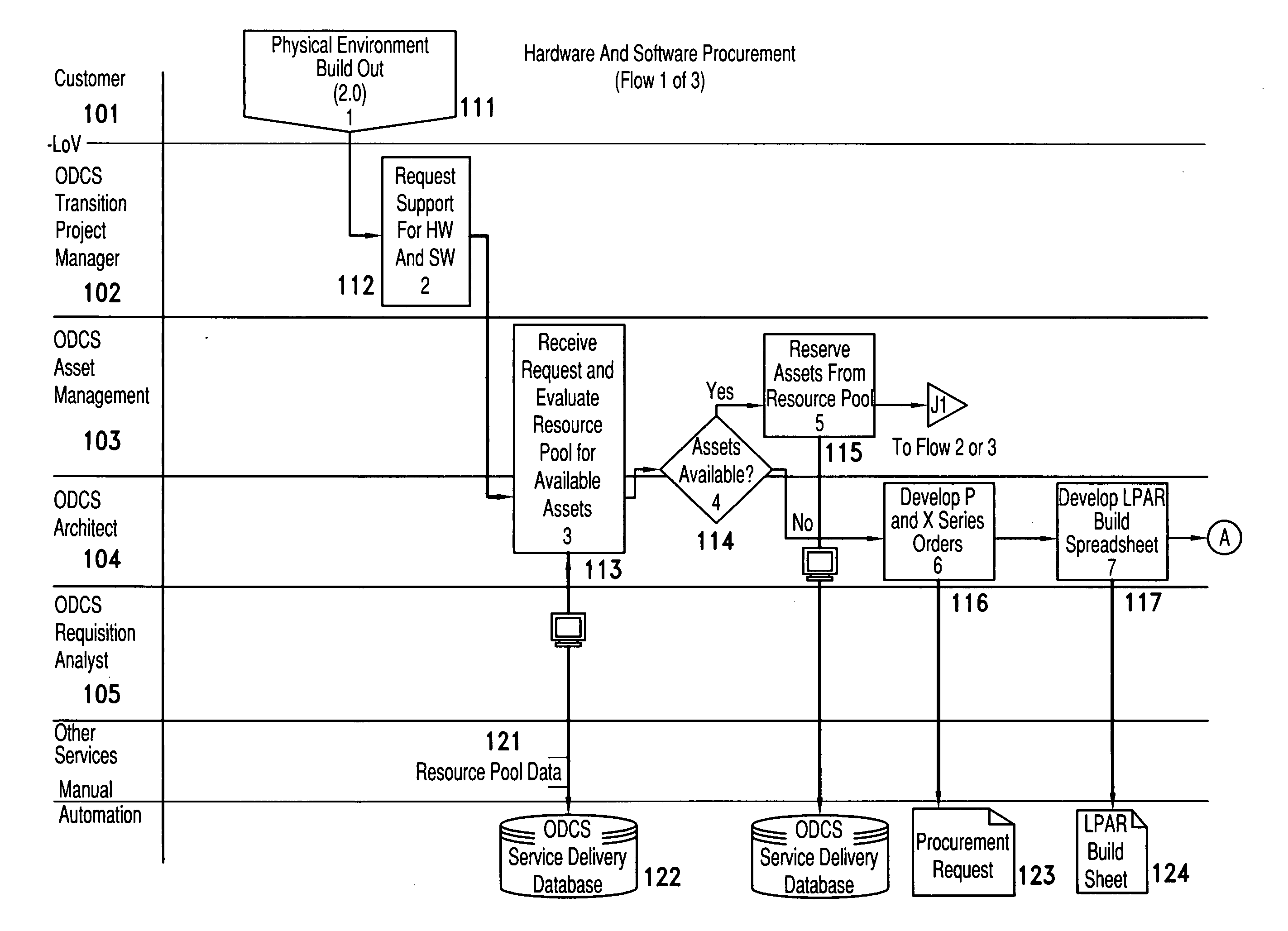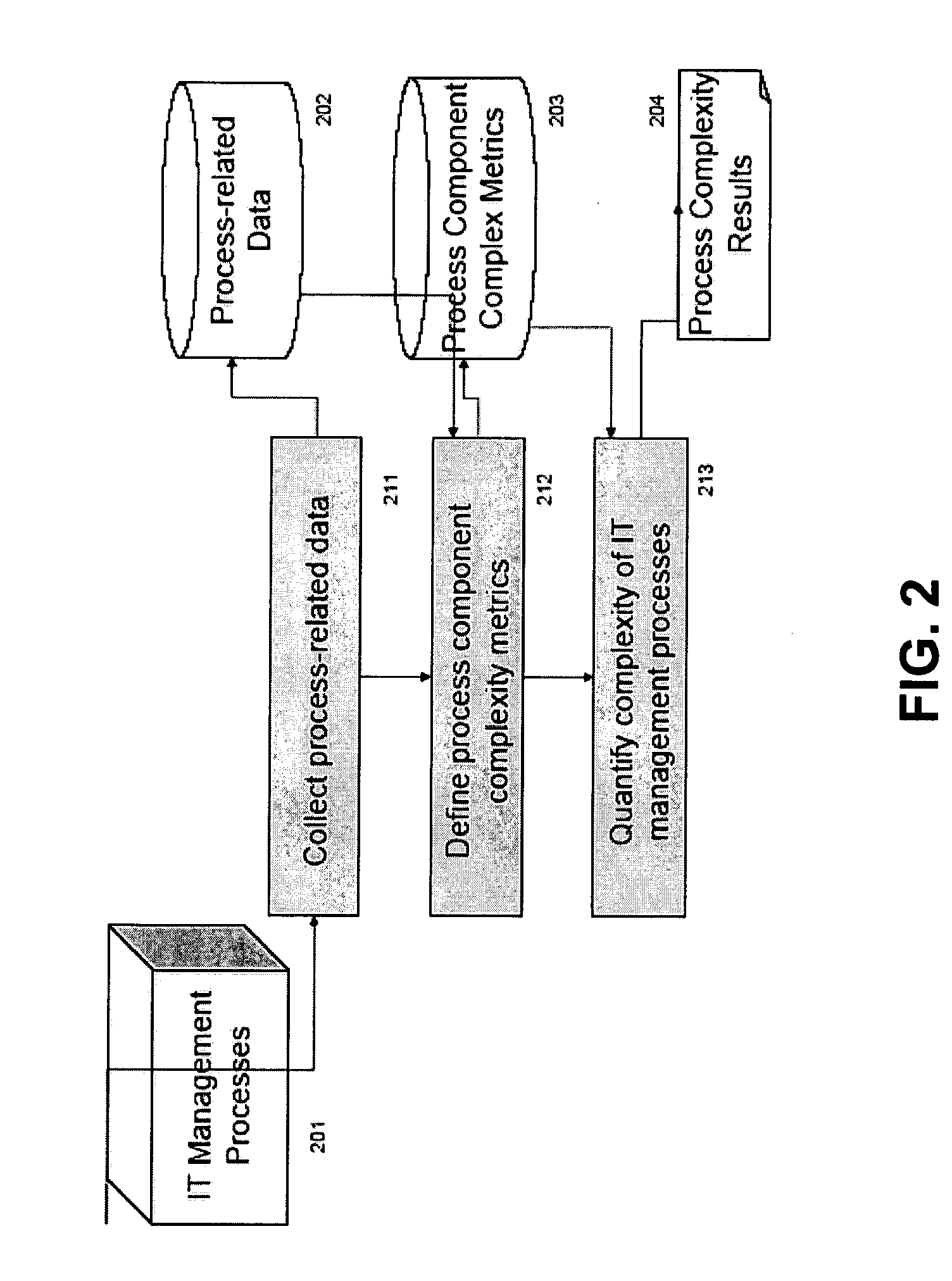Method and apparatus for quantifying complexity of information
a technology of information complexity and method, applied in the field of computing system evaluation, can solve the problems of increasing the total cost of ownership, high degree of complexity, and complex management of computing systems and information technology
- Summary
- Abstract
- Description
- Claims
- Application Information
AI Technical Summary
Benefits of technology
Problems solved by technology
Method used
Image
Examples
Embodiment Construction
[0021]FIG. 1 is an illustrative example of an information technology management process. This process involves different roles such as customer (101), ODCS transition project manager (102), ODCS asset management (103), ODCS architect (104), and ODCS requisition analyst (105). The information technology management process is composed of multiple tasks such as physical environment build out (111), request support for hardware and software (112), receive request and evaluate resource pool for available assets (113), evaluate if assets are available (114), reserve assets from resource pool (115), develop P and X series orders (116), and develop LPAR build spreadsheet (117). Furthermore, each activity may consume or produce business items that are produced or consumed by other activities. Examples are resource pool data (121) stored in ODCS service delivery database (122), procurement request (123), and LPAR build sheet (124).
[0022]FIG. 2 is a flow diagram illustrating the overall proces...
PUM
 Login to View More
Login to View More Abstract
Description
Claims
Application Information
 Login to View More
Login to View More - R&D
- Intellectual Property
- Life Sciences
- Materials
- Tech Scout
- Unparalleled Data Quality
- Higher Quality Content
- 60% Fewer Hallucinations
Browse by: Latest US Patents, China's latest patents, Technical Efficacy Thesaurus, Application Domain, Technology Topic, Popular Technical Reports.
© 2025 PatSnap. All rights reserved.Legal|Privacy policy|Modern Slavery Act Transparency Statement|Sitemap|About US| Contact US: help@patsnap.com



